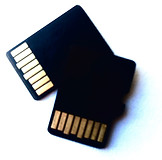Getting Started
Once you have an AudioMoth product setup is an extremely quick process. To help you start, below are guides for all aspects of product setup and general usage, which are common across AudioMoth, HydroMoth, µMoth and AudioMoth Dev. If you have any further questions, post them on the support forum and we'll get back to you.
A complete operations manual is also available to use offline here.
Frequently Asked Questions
-
I just got my AudioMoth, do I need to flash it?
-
If you plan on producing constant recordings or recording on a schedule, no. When you purchase your device through GroupGets or LabMaker, it will come equipped with stock firmware which will cover your needs.
-
Just follow the configuration app guide, plug in your AudioMoth and you're ready to go.
-
If you wish to implement additional functionality on the device, you'll have to alter firmware provided on the resources page and flash it using our guide.
-
-
Why does the configuration/timesetter app claim it's 01/01/1970?
-
AudioMoth possesses an inbuilt clock which ticks up every second from a start time. When an AudioMoth is configured using the app, the start time is matched with the computer clock. As it isn't possible to increment the clock when the device has no battery power, it defaults to the number of seconds since the UNIX epoch until it is set.
-
-
How do I calculate the battery lifespan?
-
First check the capacity of the batteries being used (provided on the packaging in mAh). To calculate how many hours the batteries will last for, divide this battery capacity by the daily energy consumption given in the configuration app.
-
For example, Energiser Ultimate Lithium batteries possess a capacity of 3600 mAh. With a daily energy consumption of 102 mAh, three Energiser Lithium batteries should operate for 3600 / 102 = 35 days.
-
-
What size SD cards can be used?
-
SD cards typically come formatted in one of two systems. Cards that are 32GB or less in size are normally supplied formatted using the MS-DOS (FAT32) system. Cards greater than 32GB are typically supplied formatted using the exFAT system.
-
From AudioMoth firmware version 1.2.2 onwards both FAT32 and exFAT file formats are fully supported. However, if you are using an earlier version of the AudioMoth firmware ensure that your SD card is reformatted as a MS-DOS (FAT32) card prior to use, or reflash you AudioMoth to use the newer firmware (see instructions here).
-






